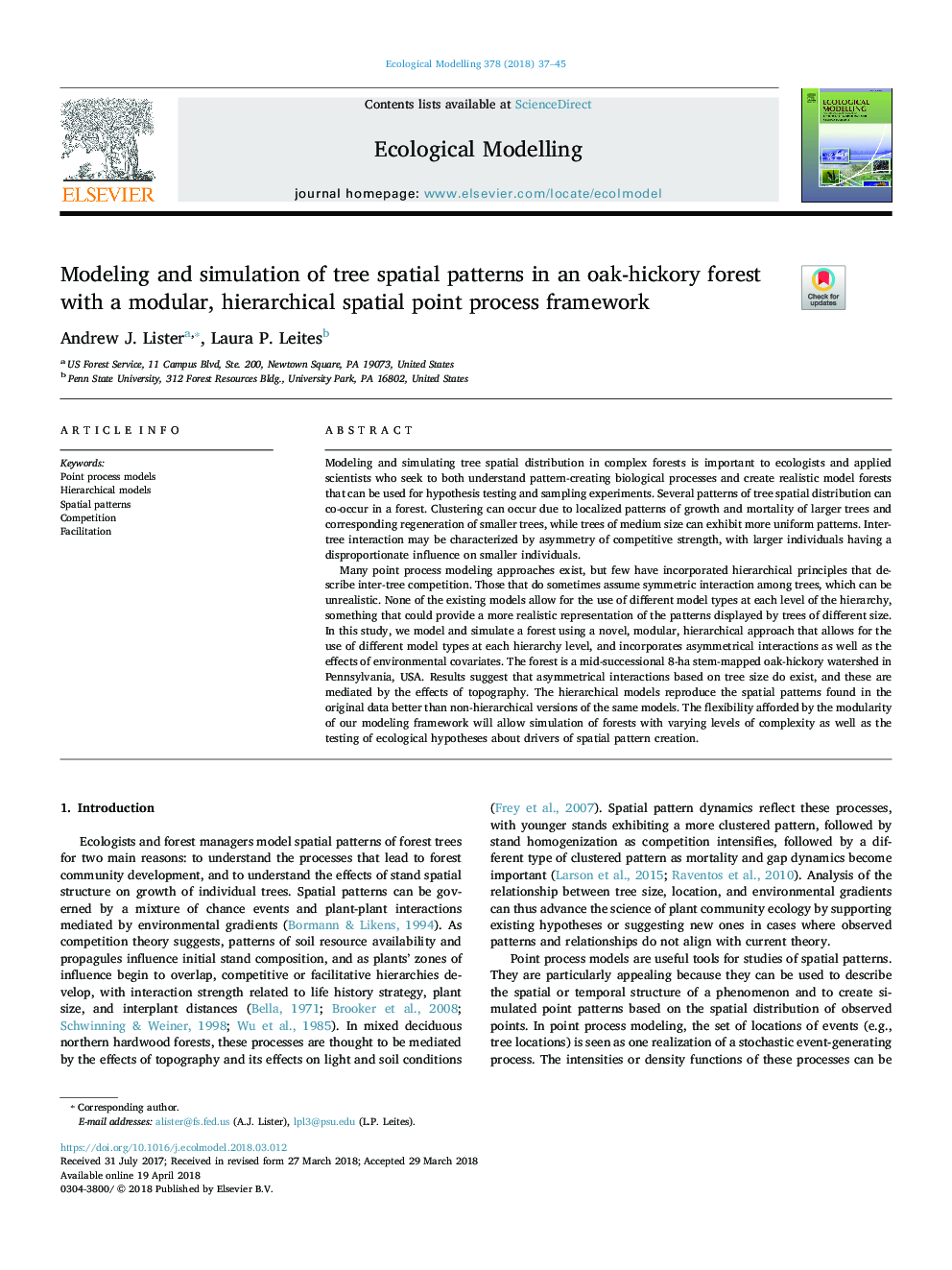| Article ID | Journal | Published Year | Pages | File Type |
|---|---|---|---|---|
| 8846052 | Ecological Modelling | 2018 | 9 Pages |
Abstract
Many point process modeling approaches exist, but few have incorporated hierarchical principles that describe inter-tree competition. Those that do sometimes assume symmetric interaction among trees, which can be unrealistic. None of the existing models allow for the use of different model types at each level of the hierarchy, something that could provide a more realistic representation of the patterns displayed by trees of different size. In this study, we model and simulate a forest using a novel, modular, hierarchical approach that allows for the use of different model types at each hierarchy level, and incorporates asymmetrical interactions as well as the effects of environmental covariates. The forest is a mid-successional 8-ha stem-mapped oak-hickory watershed in Pennsylvania, USA. Results suggest that asymmetrical interactions based on tree size do exist, and these are mediated by the effects of topography. The hierarchical models reproduce the spatial patterns found in the original data better than non-hierarchical versions of the same models. The flexibility afforded by the modularity of our modeling framework will allow simulation of forests with varying levels of complexity as well as the testing of ecological hypotheses about drivers of spatial pattern creation.
Related Topics
Life Sciences
Agricultural and Biological Sciences
Ecology, Evolution, Behavior and Systematics
Authors
Andrew J. Lister, Laura P. Leites,
